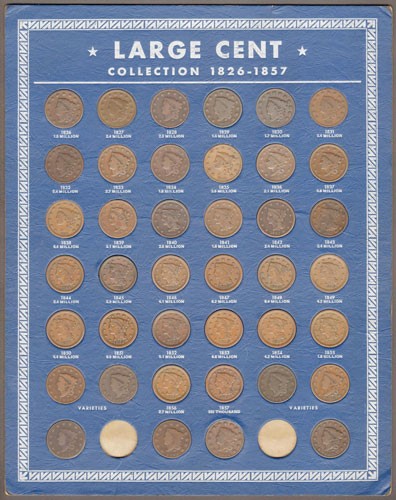USA Coin Album: Just For Fun
Posted on 1/12/2021
It’s probably safe to say that most collectors of United States coins today seek pieces that have been certified, graded and encapsulated. Perhaps the lesser specimens may be left “raw,” but certainly the key date and high grade coins should be certified to preserve them and to give their owners some peace of mind.
A few holdouts remain among members of the Early American Coppers club, who may prefer that their large cents, half cents and pre-federal coppers be able to run free. I’ve been a member of EAC for nearly 40 years, and I can see both sides of the debate, though it’s almost inevitable that such coins will be certified when finally sold at auction. That’s just a market reality.
Still, it can be fun to collect lower value pieces and simply enjoy them as they are without worrying about the outcome when they’re submitted for grading. All of my better coins are encapsulated, including the 130 or so that are used for the ANA Summer Seminar class on collecting USA type coins that I co-instruct with Frank Van Valen. A lot of the circulated pieces, however, are housed in boards or albums.
I collect and deal in antique coin boards, and at any given time there are a couple hundred in inventory awaiting new owners. From time to time I’ve elected to pull one from stock and fill it with inexpensive coins. These sets are not for sale; they’re just for my own satisfaction. One such board set is the collection of large cents shown in this photos.
The only publisher to include Large Cents among its roster of 11” x 14” coin boards during the 1930s was Whitman. In its Second Edition of boards (1936-38), Whitman produced a pair for large cents dated 1793-1825 and 1826-1857, respectively. These have flocked faces, which the company called a “suede” finish, and they are scarce but not truly rare.
Whitman’s Third Edition (1938-40) has the same unflocked paper as the company’s blue folders, but the large cents boards are very rare in this edition. By choosing to fill a Third Edition 1826-57 board, I was passing up an opportunity to sell an item worth about $150, but I don’t like the flocked variety, which tends to shed both the flocking and the text printed onto it!
This board has ten dateless openings at its bottom, and they are labeled for VARIETIES in what is otherwise a one-per-year collection. I elected to fill these blanks with the cents of 1816-25, so the collection would commence with the new type adopted in 1816. My set is missing the more expensive cents of 1823-24, but not solely because of their cost. To save money, Whitman opted to use the same die cut for this board that it did for the 1793-1825 one, so two of the “variety” slots are sized for the smaller diameter of Chain cents! Thus, they remain vacant in my collection. Otherwise, I would have spent the extra cash to fill them with the two missing dates.
To say it was fun to build this collection is an understatement. The grades of the cents were not a priority, so long as each coin had original surfaces, was free of damage and looked good alongside the others. Not surprisingly, the later dates have more detail, and this just reflects their greater availability and lesser cost. I did make a special effort to obtain the Booby Head variety for 1839, since that portrait is unique to the year. Also sought was a Small Date variety for the 1857 cent, for the mint used a half cent punch by mistake.
The set was commenced at one of the major coin shows, when I dropped by the tables of several EAC dealers. I was able to find just a few suitable coins, however, as their inventories were mostly too nice to have common dates in lower grades. The rest of the collection was assembled through eBay purchases, with a few upgrades along the way. The most expensive coin was the somewhat scarce 1857, which cost $110. The least expensive piece was the 1845, which was priced at just $12. The others mostly fell within the $20-40 range, making for a pain-free shopping experience.
I briefly considered completing a 1793-1825 board, as well, but the small diameter of the 1793 opening requires a rare Chain cent. This fact, along with the high value of 1799 cents, proved too discouraging. As it is, Whitman’s Third Edition board for that span is so rare that I haven’t had a duplicate to spare for such a project!
David W. Lange's column, “USA Coin Album,” appears monthly in The Numismatist, the official publication of the American Numismatic Association.
Stay Informed
Want news like this delivered to your inbox once a month? Subscribe to the free NGC eNewsletter today!

